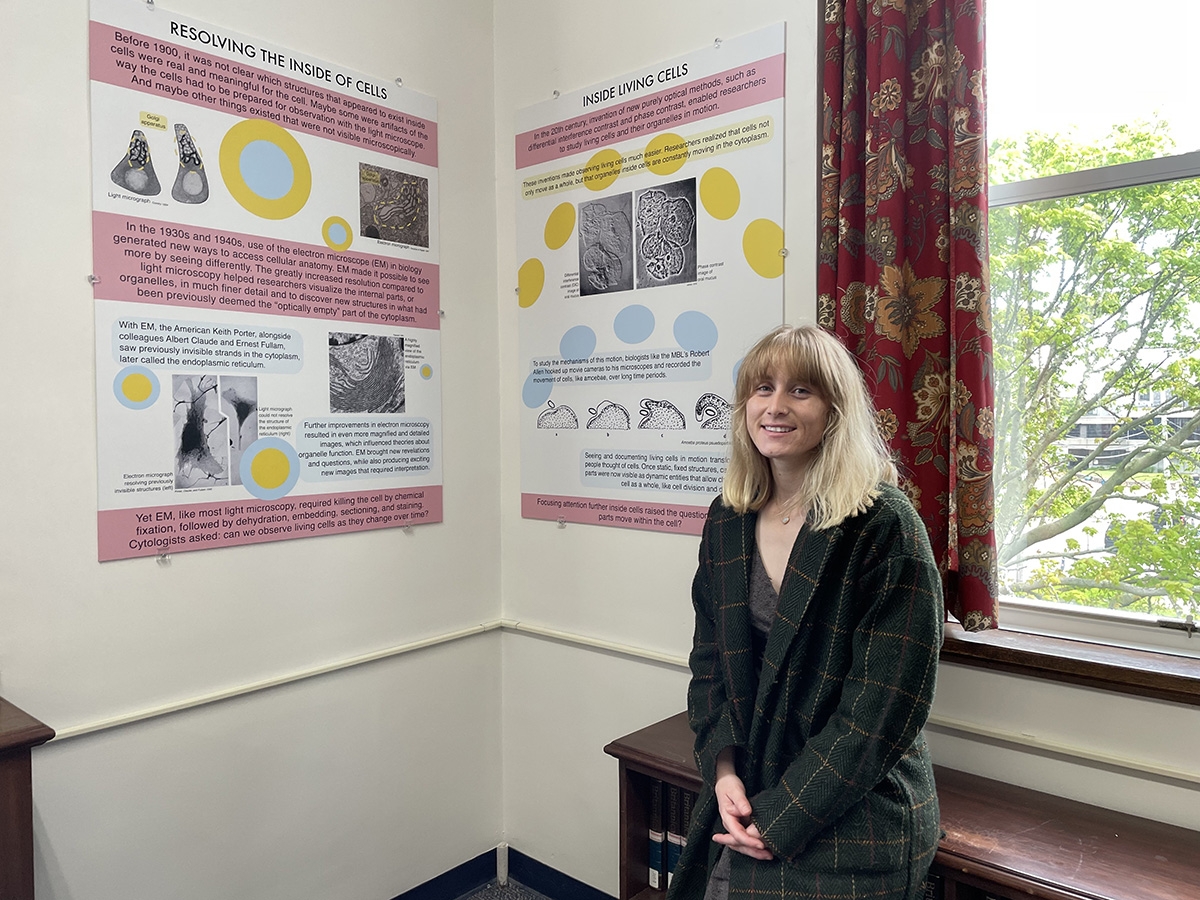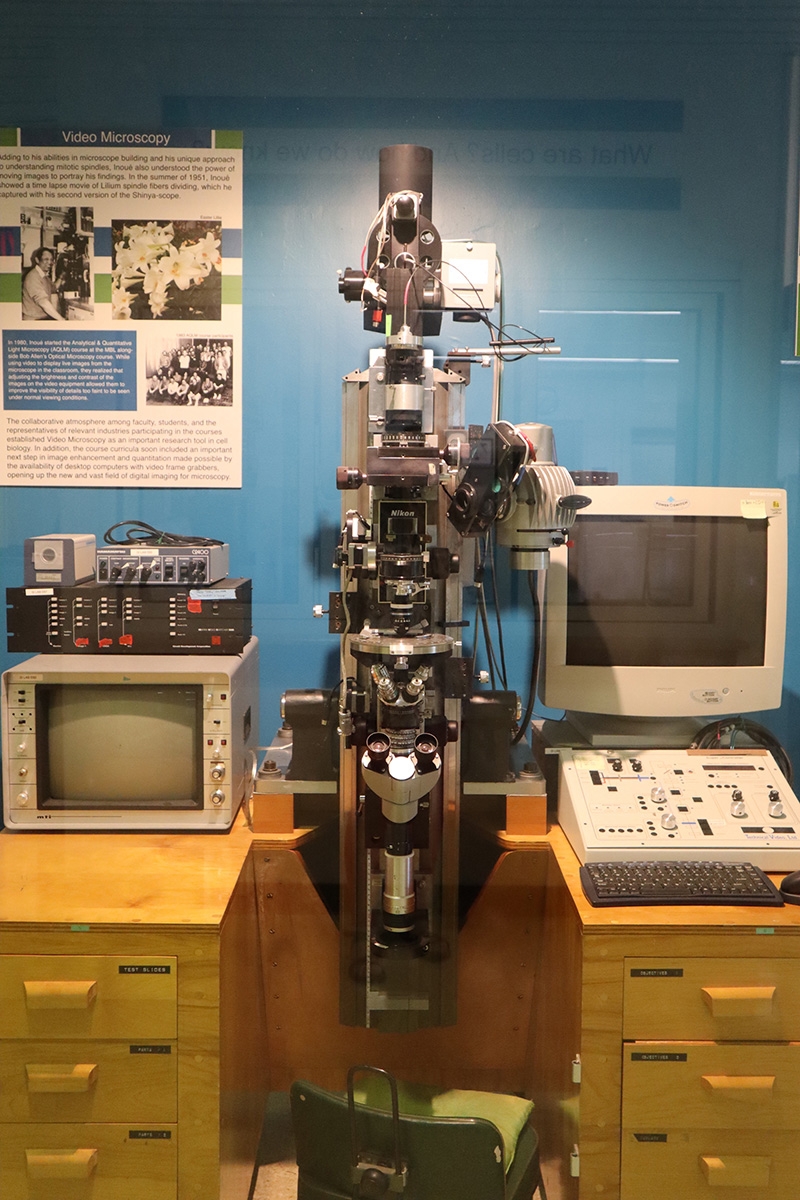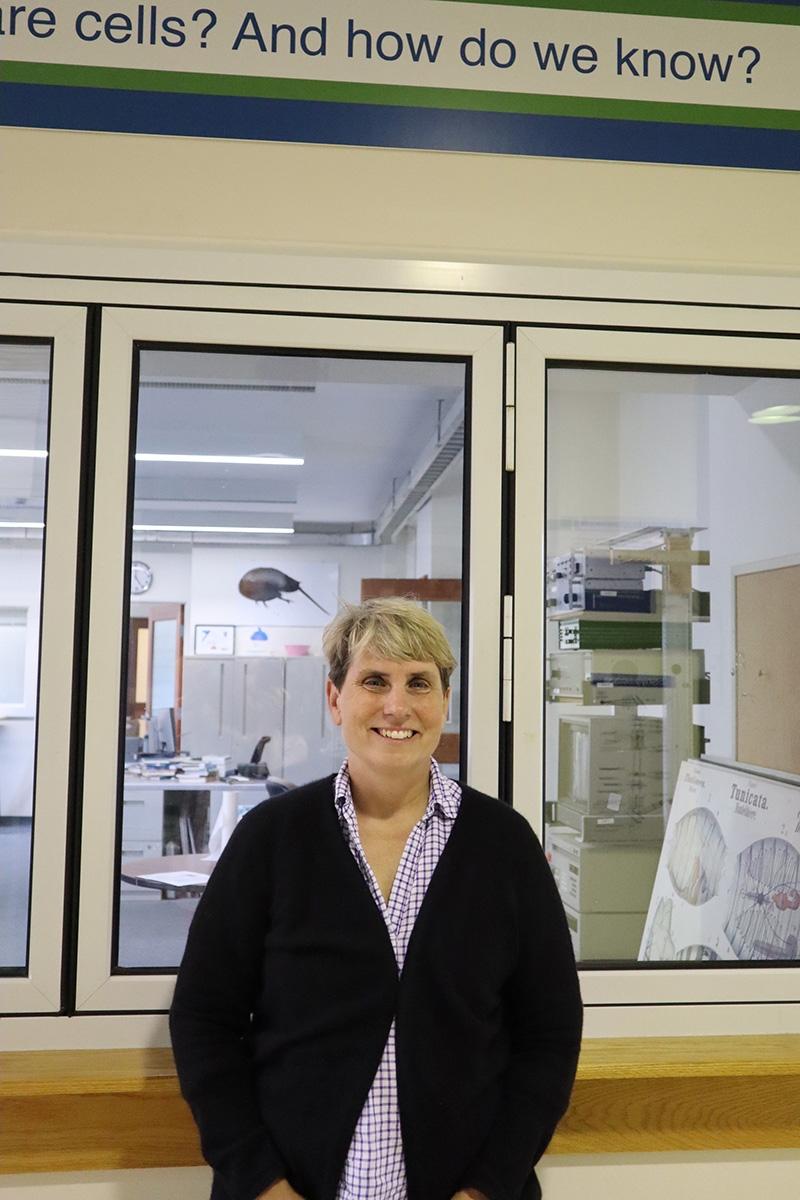MBL Exhibits Show Entwined History of Microscopy and Cell Biology

Everyone knows the story of Robert Hooke peering at cork through his self-designed microscope and noting its porous compartments looked like monastery cells. Hooke couldn’t have known, in 1665, that his simple observation would launch research that culminated two centuries later in the “Cell Theory,” designating cells as the basic unit of all life.
But “Seeing Cells,” a new exhibit in the MBLWHOI Library, shows that our ideas of what cells are and what they do have been profoundly influenced over time by the microscopic images that scientists create. Its companion exhibit, “Seeing Life,” highlights the many influential contributions of MBL scientists and microscopists to our understanding of the cell, and its fundamental roles in life and death.
A public reception and viewing of “Seeing Cells” and “Seeing Life” will be held on Friday, July 22, from 5:30-7:15 PM in the MBLWHOI Library (2nd floor, Lillie Building).

"Seeing Cells"
“Seeing Cells” was created by Anna Clemencia Guerrero, a PhD candidate in the Center for Biology and Society at Arizona State University (ASU). Guerrero worked closely with historians of cell biology Jane Maienschein (MBL Fellow/ASU) and Karl Matlin (MBL Whitman Center/University of Chicago), and MBLWHOI Library co-director Jennifer Walton, on exhibit content and design.
“Seeing Cells” explores how the first images of cells inspired new questions and theories, and how that questioning spurred the creation of more images. The exhibit encourages viewers to ask: “What is a cell?” and “How do we know?”
Starting with images made by the earliest microscopes in the 17th century, "Seeing Cells” follows important cell images through the early 20th century, including discoveries by MBL scientists. In the 21st century, the number and diversity of cell images is enormous, including images of “synthetic” cells that scientists design. The exhibit ends by asking viewers to reflect on how images of cells inform how we imagine them -- and what consequences that might have for future research.
"Seeing Life"
The “Seeing Life” exhibit explores some of the key figures in the MBL’s earliest days as an institution. It highlights the research organisms as well as scientific and cultural contributions of MBL affiliates such as Charles Otis Whitman, the lab’s first director; Cornelia Clapp, the first scientist to arrive at the MBL in 1888; Nobel Prize winners Thomas Hunt Morgan and Albert Szent-Györgyi; and other influential scientists including Ethel Brown Harvey, Jean and Katsuma Dan, Ernest Everett Just, and Edmund Beecher Wilson.
“Seeing Life” also displays related books, publications, and microscopes, including an early model of MBL scientist Shinya Inoué’s polarized-light “Shinyascope.” The exhibit celebrates the continuing diversity of people, organisms, and science at the MBL.


This project was supported by the National Science Foundation, Arizona State University, the Webster Foundation, and the MBL. To read more about the project’s background, please visit this page.